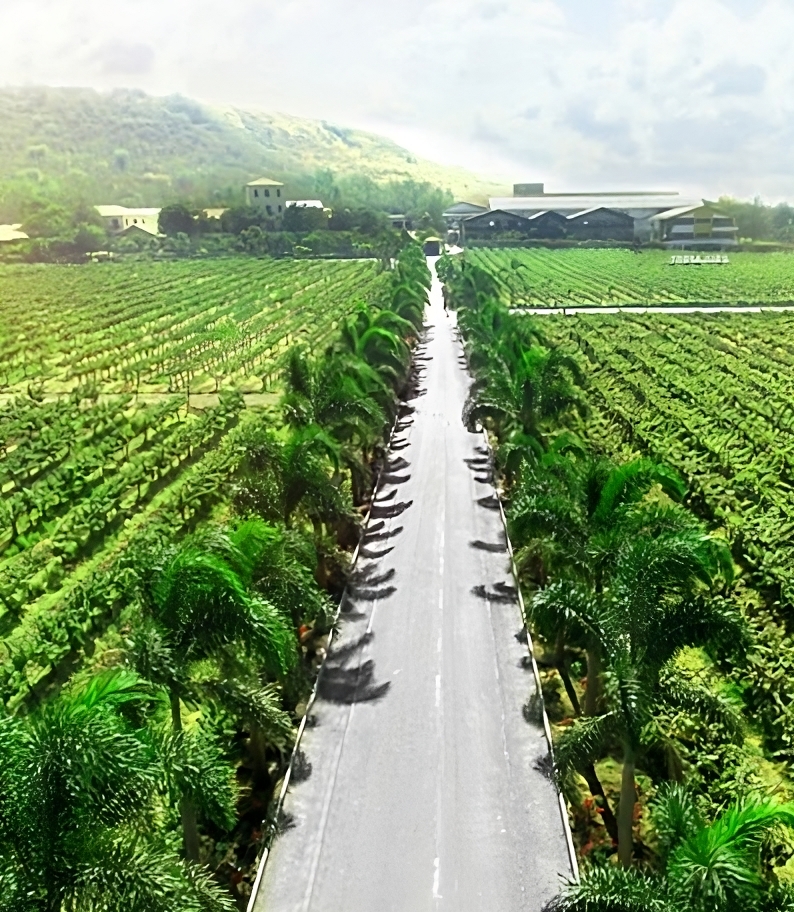In the simplest of terms, wine is an alcoholic beverage made with the help of the fermented juice of grapes. It is important to note that wine grapes are different from table grapes. The latter is what is intended to be consumed while fresh. The former, however, is grown with the purpose of creating raisins by drying or creating everyone’s favourite drink. Table grapes are seedless, larger in size and have a thicker pulp. They also have less acidity and sugar levels than a wine grape. Wine grapes are smaller, sweeter and have lots of seeds. Wine is a beautiful drink for several reasons. For one, it is a completely natural product. At Sula Vineyards, we produce the best wines in India, which have no additives of any sort. They are also vegan and gluten-free; and thus, they cater to pretty much everyone. Several white wines, red wines and rosé wines are created using our top-notch winemaking system.
What Is Special About Sula Wines?
Sula wines are made using freshly picked grapes. Once harvested, they typically come to the winery within 12 to 14 hours. They are then fermented and processed in order to make the wine for that particular year. These quality wines are sold in over 30 countries. They are so world-class that they are also sold in the EU, which has some of the toughest laws in the world when it comes to wine. From the Port category which is priced at around Rs 250 a bottle, all the way to our Rasa wines that are priced at around Rs 2000 a bottle, at Sula there is a type of wine for everyone. With Sula’s winery located in Nashik, it has grown to be India’s largest and most awarded wine brand.
Is Winemaking in Nashik the Same As the Rest of the World?
The winemaking process in India is actually slightly different than it is in the rest of the world. To begin with, it is important to know that the wine is made only once every year. Sula’s winemakers are professionals who do their best to get this done just right, time and time again. The time of the harvest is in the first quarter of the year itself, from January to March. Since the weather in this period varies, from the end of winter in January to the beginning of summer in March, it can play a huge role in the harvest. This is the major fundamental difference when it comes to winemaking in India which has a subtropical climate. Most places in the world where wine is usually made, such as France, California, South Africa, New Zealand, Australia and Chile, are further away from the equator. Since Nashik, India is closer to the equator, the weather differences are quite significant.

Our grapes ripen over winter and are harvested over summer. Usually one would expect ripening to occur over the summer. This is the case with the rest of the world in the northern hemisphere, with their grapes being harvested in September and October. Thus, their grapes ripen over the summer and are harvested before winter in November and December. The reason why winter has been conducive to the ripening of grapes in India, is because the temperature during this time is high enough to allow it. Since the seasons in India are not in line with the rest of the winemaking locations, the process does come with its own set of challenges, but it’s nothing that the experts at Sula don’t know how to tackle.
What Is the Basic Winemaking Process?
In its basic form, wine production is largely a natural process that requires only a bit of human intervention. It is up to the professionals at Sula to improve what nature has already provided, using their world-class techniques. There are five basic steps of winemaking that include harvesting, crushing and pressing, fermentation, clarification, ageing in case of some wines and finally, bottling. The variations in certain points of the process are what leads to different types of wine.
During harvest season, around 500 farmers bring in their grapes after which they are taken into production. The grapes once collected are separated into white grapes and red grapes. The white grapes then get crushed in Sula’s pneumatic balloon press, whereas the red grapes get crushed in the de-stemmer at the crushing pad. Once the respective juices are collected, they are put into Sula’s tanks for filtration in the cellar. The capacity of the tanks is around 1,35,000 litres, with each tank holding over 1,50,000 bottles worth of wine. In these tanks, is where fermentation also occurs. This process involves the conversion of sugar into alcohol.

Coming to the barrelling and ageing process, it is a very common myth that for every wine, the longer it is aged, the better. In fact, over 95% of wines are made to be consumed in the first few years itself, particularly the white wines. Red wines can be aged for a little longer, but very few are meant to be aged for extremely long. One such example of a red wine that can be aged for more than 10 years is the Sula Rasa Cabernet Sauvignon. An example of a white wine that spends four months or so in French oak barrels is the Dindori Reserve Chardonnay. Oak gives this wine its texture and creaminess.
In the final step of bottling, the wine is bottled, labelled and packed to be shipped to customers around the world. Sula’s bottling capacity is at a whopping 2000 bottles per hour! While making everyone’s favourite wines, we also ensure that sustainable practices are taking place, even during our bottling process. Our packaging is 99% recyclable. The materials involved, such as the glass, aluminium screw caps and cardboard boxes are used, keeping the safety of the environment in mind.
Let’s now understand how the variations in winemaking have led to some of the best wines Sula has created.
Red wine
Red wine consists of a lot of colour, tannin and flavour. These grapes are not pressed immediately, since all these properties, especially the colour, are present in the skin. Thus the entirety of the grapes, with skins and seeds are taken to the de-stemmer at the crushing pad, after which they go into the tank for the process of fermentation, which takes two to three weeks. During this period, a lot of the colour gets extracted and thus, we get the deep red colour of the wine. One of our award-winning wines, Sula Zinfandel, is a great red wine. It has been aged in American oak barrels, and is a complex and rich wine. This drink has fruity flavours on the first sip, followed by a hint of spice and a smokey finish.
White Wine
Here is a fact many people might not know, but white wine can be made from either white grapes or even red ones! This is because, white wine only requires the juice of the grape which once extracted, remains clear, regardless of the colour of the grape. Thus when it comes to the crushing process in Sula’s pneumatic balloon press, the white grapes are separated from the grape skin and seeds, after which they are fermented to make white wine. The Sula Late Harvest Chenin Blanc is famous for being India’s first still dessert wine! This fruity and sweet white wine has aromas of apricot, mango and raisins accompanied by a memorable finish.
Rosé
Since rosé still needs some amount of colour, red grapes are used for this type of wine as well. As rosé wines have a lighter and more subtle colour, the skin and the juice are kept together or fermented only for about six to eight hours, unlike red wine. This is how the lighter colour is obtained. Since a rosé wine is fermented like white wine, it is known to be a hybrid between the two. Thus, unlike the common misconception, rosé isn’t actually made by mixing white wine and red wine together. The Source Grenache Rosé, which is a serious, dry rosé, is inspired by the wines of the south of France. It has been made from the Grenache grape which is another first for India. This award-winning wine has mild citrus notes with aromas of tropical fruit and white peach with an elegant finish
Sparkling Wine
Sparkling wine can be made from white or red grapes. However, most of the time, sparkling wine is white, since it comes from the clear flesh of the grape. For sparkling red wine, the initial process is similar to that of a rosé. The bubbles that are present in sparkling wines are a result of the carbon dioxide produced once yeast starts acting on the sugar during the fermentation process. When this carbon dioxide is trapped inside a sealed space, the wine is made fizzy due to the bubbles. Thus, while still wine only goes through one fermentation, sparkling wine goes through secondary fermentation as well. Sula Sparkling Shiraz is India's first sparkling Shiraz wine. This sparkling red wine is bursting with flavours of red berries, pomegranate and sweet plums with a hint of sweet spices as well.
Final Thoughts
We hope that this detailed explanation of Sula’s winemaking process has shown you how passionate we are about producing the best wines in India. At Sula, we work hard to implement environmentally friendly and sustainable practices in everything we do, and we strive to carry on our legacy and philosophy, with the hopes to enhance every special occasion in your life.
Want to stay updated with the latest in the world of wines? Follow us on Instagram, Facebook, and Linkedin today!







